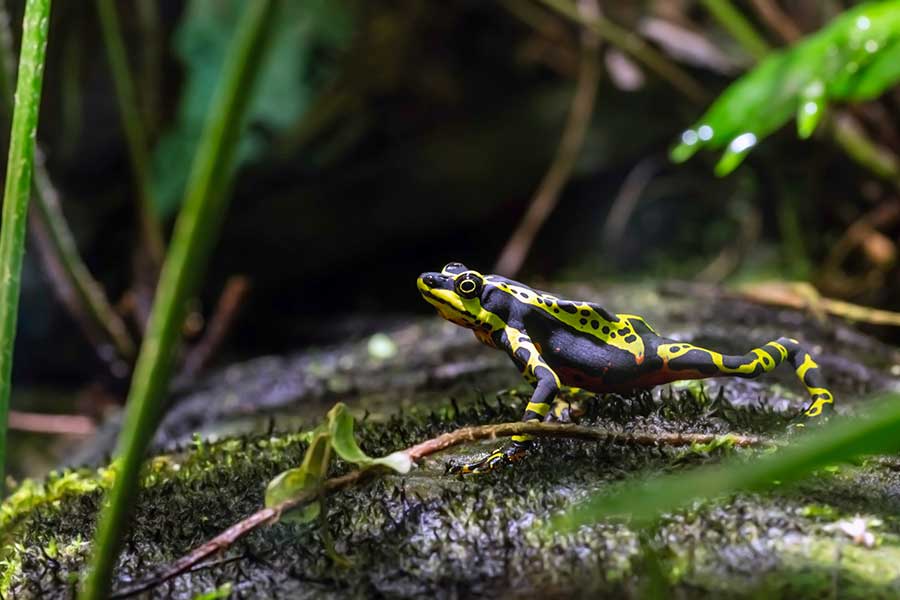Harlequin toads, also known as Atelopus species, are captivating amphibians renowned for their vibrant coloration and unique patterns. While primarily found in Central and South America, these charming creatures have garnered attention among exotic pet enthusiasts worldwide. However, owning a harlequin toad requires a thorough understanding of their specific care needs to ensure their health and well-being.
Harlequin toads belong to the Bufonidae family and are characterized by their striking coloration, which often resembles the patterns seen on traditional harlequin costumes. They typically inhabit humid forests and montane regions, preferring cool, moist environments near streams or rivers.
Harlequin Toads as Pets
Before considering a harlequin toad as a pet, it’s essential to research local regulations regarding amphibian ownership and ensure you’re prepared to provide the specialized care they require. While these toads can make fascinating pets for experienced amphibian keepers, they are not recommended for beginners due to their specific environmental needs.
Harlequin Toad Care Sheet
1. Habitat Setup:
– Enclosure: Provide a spacious terrarium with ample space for climbing and hiding spots. A vertically oriented tank with a secure lid is ideal.
– Substrate:Use a mixture of sphagnum moss, coconut coir, or organic soil to maintain humidity levels.
– Temperature and Humidity: Maintain temperatures between 70-80°F (21-27°C) during the day, with a slight drop at night. Keep humidity levels high (around 70-80%) with regular misting.
2. Diet:
– Feeding: Harlequin toads are carnivorous and primarily feed on insects such as crickets, fruit flies, and small worms. Offer appropriately sized prey items dusted with calcium and vitamin supplements.
– Feeding Schedule: Feed juveniles daily and adults every 2-3 days, adjusting based on individual appetite and activity levels.
3. Water Requirements:
– Water Source: Provide a shallow water dish for soaking and drinking. Ensure the water is dechlorinated and changed regularly to prevent contamination.
– Misting: Mist the enclosure daily to maintain humidity levels and provide a source of hydration.
4. Handling:
– Limited Handling: Minimize handling as much as possible to reduce stress on the toad. When necessary, use wet hands to avoid damaging their delicate skin, as they are susceptible to absorbing toxins through their skin.
5. Health and Maintenance:
– Veterinary Care: Schedule regular check-ups with a qualified exotic veterinarian familiar with amphibians to monitor health and address any potential issues.
– Cleanliness: Regularly clean and disinfect the enclosure to prevent the buildup of bacteria and mold. Remove any uneaten food to maintain a hygienic environment.
Harlequin toads offer enthusiasts a glimpse into the mesmerizing world of amphibians with their striking appearance and unique behaviors. However, their care requirements demand dedication and attention to detail. By providing a suitable habitat, a balanced diet, and proper maintenance, owners can ensure these captivating creatures thrive in captivity while contributing to their conservation efforts in the wild.
